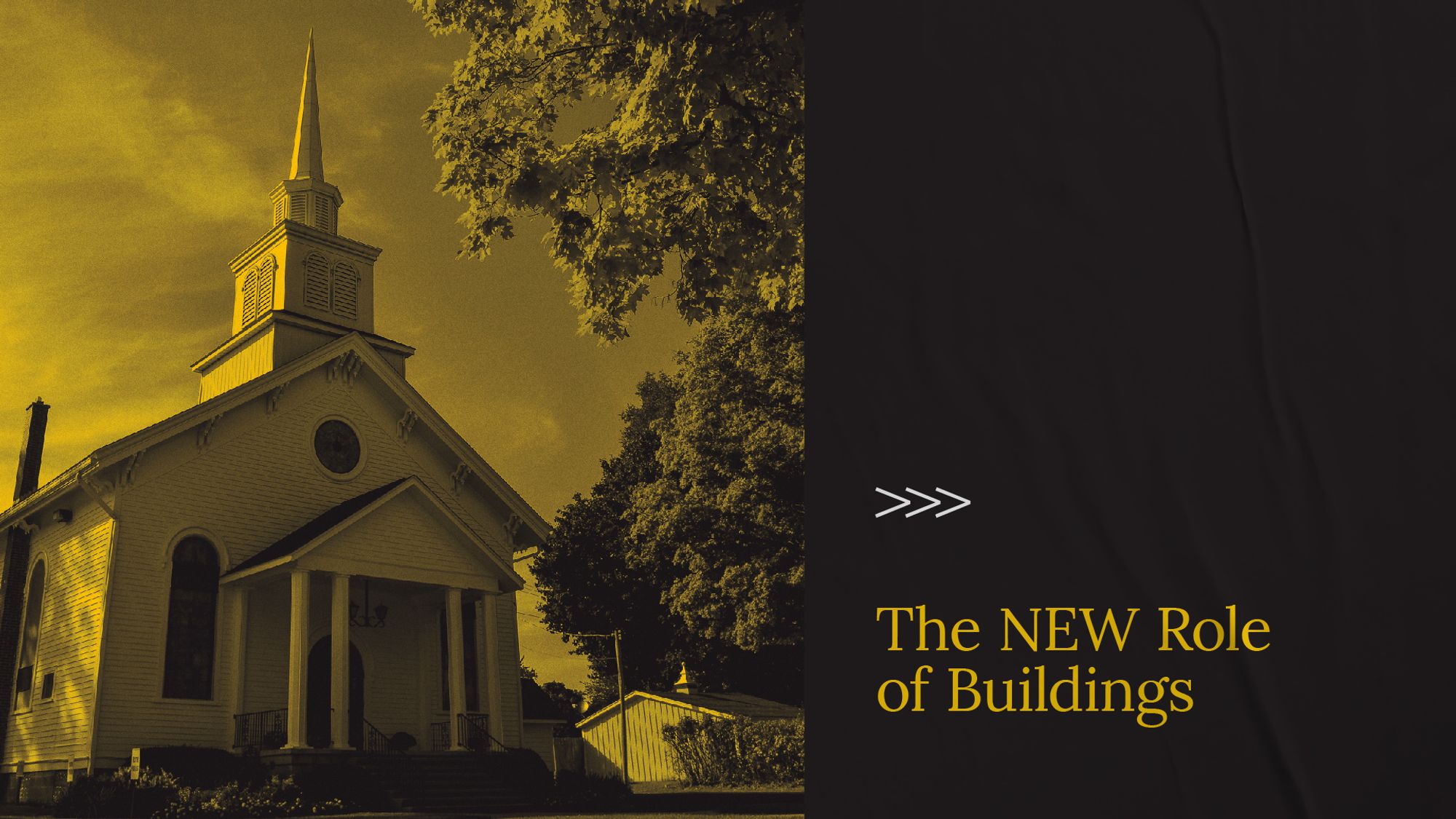
In 2014, Target’s stores were empty. The digital platform that had been broadly accepted by consumers, and was currently in early adoption by retailers, seemed to be driving customers away from the brick and mortar experience.
Target had seen a change in its customers’ shopping habits. Similar to the church, Target was designed to be a once-per-week experience to get all you need at one time. However, people were not just shopping on weekends, and convenience was driving purchasing decisions. People began shopping more often with a smaller list of purchases each time. Amazon and other online retailers had begun to teach people that you do not have to buy everything at once and that it was ok to make one-off, even impulsive purchases. E-commerce was becoming more integrated into peoples’ lives. Target had to make an adjustment.
Several years ago, Target announced that it was going to move away from the massive retail presence to establish smaller footprints in more urban areas. The idea was very simple:
If we are going to be an integrated part of our customers’ everyday shopping experience, we have to be in the area where our customers’ life happens.
The big box model was built on the idea of having everything in inventory in one place to cater to the customer’s once-per-week shopping habits. Due to the ease of shopping that was created through the digital platform, customers’ habits changed. Because products could be easily found on mobile devices or through online purchasing, and delivered seamlessly within a day, people no longer feel the need to build a huge list and complete their shopping experience all at once. Customers have integrated the “on-demand” shopping experience into their everyday lives, and Target recognized that this change in consumer behavior necessitated a change in their retail model.
Target simply followed the change in the customer, who was no longer shopping once per week but shopping every day in different places, at different times, and for different things.
This means that Target could no longer be 20 minutes away from the customers they want to serve, asking their customers (mainly parents) to come to them once per week, mostly on weekends. Weekends for families, which are the “Target market” (pun intended), are congested with competing activities such as kids’ sports, weekend getaways, college football (for those of us in the South), or NFL games. The drive to the big store and parking lot, combined with waiting in line and not knowing what was in inventory, was simply no longer as attractive as before. People wanted to know what was in the store before they got there to avoid disappointment and wasted time.
Because of this, Target has made a seismic pivot. Ten years ago, the average Target retail store was 140,000 SF, whereas now the average Target store is 40,000 SF, going as low as 12,000 SF for certain high density markets. The stores now operate as “hubs” versus one stop shops. This means two things:
- Target realized that being closer to their customers was far more important than having everything in inventory at a larger store far away.
- Because of the digital platform, Target was able to study the purchase history and habits of local communities to curate inventory in its local stores based on the shopping patterns and needs of that specific community. In short, Target is able to tailor the in-store experience and inventory to the needs of the community around that specific store.
Here is an example of what this means, taken directly from the Target website:
“Inside each small-format store, guests will find many of the categories (like Home, Apparel, and Food and Beverage) they’d expect to see in a full-size store, but with smaller assortments curated for their local neighborhood. For example, we’ll carry paper towels in our urban stores, but in smaller pack sizes so it’s easier for guests to carry home and store in smaller spaces. It’s all about listening to our guests in each neighborhood and bringing customized shopping experiences to life (emphasis mine).”
Like Target, our pre-Covid physical church models were based on the idea of a once-per-week experience at our locations. Similar to Target, the digital platform has driven people away from our buildings. Similar to Target, people became accustomed to getting all, or the majority, of their spiritual fill on Sunday morning. The typical American Christian equates going to church with being the church. So, we have big buildings that are built to accommodate as many people as possible at one time. And similar to Target, in order to do this, most of our churches have been built more than 15-20 minutes away from at least 50% of the people who attend so that we could find enough land to build a big enough building and a large enough parking lot.
Like 2014 Target consumers, we now deal in an age where people can go online to access content, which is mostly what our current copy and paste “digital experiences” offer people: watching a sermon online.
Target, Home Depot, Apple, and other retailers we have studied teach us that the purpose of the digital platform isn’t to accommodate existing customers as much as it is to reach new markets with a differentiated offering. They’ve also taught us that when this is done well, it drives an inordinate amount of traffic to physical locations. So what is next for church buildings?
Are hubs the new multisite?
Over the past several years, our real estate company, Ministry Solutions, has seen a consistent trend:
Church growth is coming in the form of having a larger number of smaller campuses.
In fact, in 2019 we managed and funded projects for 18 churches listed on the Fastest Growing Churches in America list. There were several common denominators, but a big denominator was that every one of those projects (some clients with multiple projects at once) were all under 1,000 seats and less than 30,000 SF, with the exception of one broadcast venue of 1,500 seats. The majority of the projects were between 500 and 750 seats.
The single most significant insight we learned from an engagement standpoint came from studying the data of the launched campuses. In almost every case, there was an inverted economy of scale in relation to the number of seats and the level of engagement. In other words, the smaller the room, the higher the levels of participation in serving, giving, and volunteering. The conclusion we were able to draw was this:
The smaller the room, the more people feel like a part of the story versus
feeling like a product of the story.
Another major factor contributing to the success of these campuses was simply location. In densely populated areas, finding enough square footage and parking for 1,000+ seat campuses can be very difficult, if not impossible. Based on the simple laws of supply and demand, it is also far more expensive to acquire and develop larger facilities because there are so few options. The larger the space required for buildings and parking lots, the more you begin to compete with other uses such as office and multifamily (who build vertically and therefore obtain more square footage), which drives prices up even further.
Bottom line: the smaller the spacial demands, the more properties there are available closer to where you want to be, so the projects cost less, and the timeline to get in the buildings is much shorter. Therefore, the buildings fill up faster and pay for themselves more quickly, allowing for accelerated growth of future campuses.
But let’s step outside the box of our known model for just a moment. Our multisite models were also simple extensions and facilitators of our Sunday morning service model. Our buildings still remain empty during the week. In short, multisite is a distribution strategy for a Sunday morning service, but has not yet adapted to become a strategy to embed churches as a part of our congregations’ everyday lives. Having a smaller hub within a community will allow us to cater to the weekday needs of the people, but can also create significant opportunities for unleashing generosity into those communities based on the needs of any given specific community.
________________________________
If we draw a correlation between Target’s shift and what we’re seeing now, what would it look like to move from a store church that has everything you need for the one time per week people shop worship to a space that is designed to help make the store the church building a part of your community’s everyday shopping life?
________________________________
New and new-ish stores
Bruce Starns, VP of Digital Solutions at Target, stated that Target has a goal of having 75% of the US population within 10 minutes of a store. As Target is rolling out its new footprint, it still owns and leases a lot of existing real estate around the country. Several hundred of those buildings were built out prior to the rollout of Target’s new strategy. Therefore, not only has the digital platform necessitated a buildout of new, smaller stores, it also requires Target to retrofit its existing stores to fit within the new hub experience.
As of right now, Target has announced plans to add 150 new stores that reflect its new model, but also plans to renovate 350 existing stores to facilitate the new hybrid model as well. As a church, now is a great time to take inventory of existing spaces as we think about how we are going to launch new locations in the future. Why? The cheapest new space we can create is within the locations we already own or lease.
Are you interested in hearing more?
We would love to talk with you! If you would like to connect with the Ministry Solutions please contact us here:
- Buildings and Finance Insights (76)
- Ministry Insights (71)
- Organizational Insights (62)
- Church Growth (59)
- Leadership (48)
- Buildings and Finance (39)
- Facility Strategy (33)
- Financial Strategy (29)
- Digital Engagement (28)
- Organizational Clarity and Strategy (28)
- Featured Insight - Buildings and Finance (25)
- Multisite (21)
- Buildings That Fund Ministry (19)
- Digital Engagement Insights (19)
- Featured Insight - Buildings That Fund Ministry (17)
- Media (17)
- Church Debt (12)
- Ministry Growth (12)
- Hiring (6)
- Strategy (5)
- Insight FEATURED (4)
- Ministry Strategy (4)
- Church Mergers (3)
- Digital Strategy (3)
- Featured Insight - Multisite (3)
- Merger Insights (3)
- Clarity (2)
- Consultants (2)
- Data Analysis and Reporting (2)
- Featured Insight - Digital Engagement (2)
- Ministry Solutions Group (2)
- Organizational Leadership (2)
- Clear Path Forward (1)
- Consultants - Ministry Strategy (1)
- Featured Insight - Project Financing (1)
- Featured Insight - Succession Planning (1)
- Ministry Solutions Group Team (1)
- Succession Insights (1)

 Nathan Artt
Nathan Artt

Thoughts or insights? We'd love to read them. Please share your insights below.